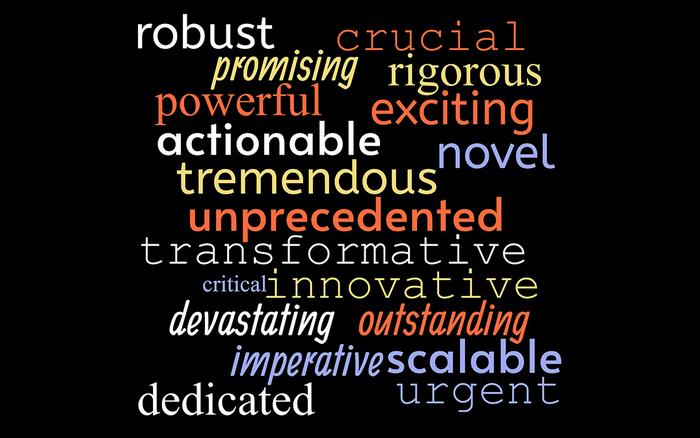Tsukuba, Japan—The success of scientific endeavors often depends on support from public research grants. Successful applicants increasingly describe their proposed research using promotional language (“hype”); however, it remains unclear whether they use hype in their subsequent research publications.

Credit: University of Tsukuba
Tsukuba, Japan—The success of scientific endeavors often depends on support from public research grants. Successful applicants increasingly describe their proposed research using promotional language (“hype”); however, it remains unclear whether they use hype in their subsequent research publications.
A research team led by the University of Tsukuba analyzed all published research abstracts of projects funded by the US National Institute of Health (NIH) from 1985 to 2020. The analysis covered 139 hype adjectives emphasizing significance (e.g., imperative, paramount), novelty (e.g., revolutionary, ground-breaking), scale (e.g., massive, vast), rigor (e. g., careful, sophisticated), utility (e.g., impactful, seamless), attitudes (e.g., incredible, exciting), and the gravity of problems (e.g., dire, devastating). A dramatic growth in almost all hype terms was found over the 36-year period. Furthermore, the usage trends of hype adjectives were closely correlated with the usage trends in NIH funding applications during the same period. This finding suggests that the language choices of investigators at the grant application stage affect the subsequent presentation of research findings.
The study indicates the role of funding mechanisms in shaping the tone of research communication. Recognizing the concerns surrounding increasing levels of hype, funding bodies are urged to not nudge investigators towards salesmanship.
###
This work was supported by JSPS KAKENHI (Grant number 21K02919)
Original Paper
Title of original paper:
Promotional language (hype) in abstracts of publications of NIH funded research
Journal:
JAMA Network Open
DOI:
10.1001/jamanetworkopen.2023.48706
Correspondence
Associate Professor Neil Millar
Institute of Systems and Information Engineering, University of Tsukuba
Related Link
Institute of Systems and Information Engineering
Journal
JAMA Network Open
DOI
10.1001/jamanetworkopen.2023.48706
Article Title
Promotional Language (Hype) in Abstracts of Publications of National Institutes of Health–Funded Research, 1985-2020
Article Publication Date
21-Dec-2023




